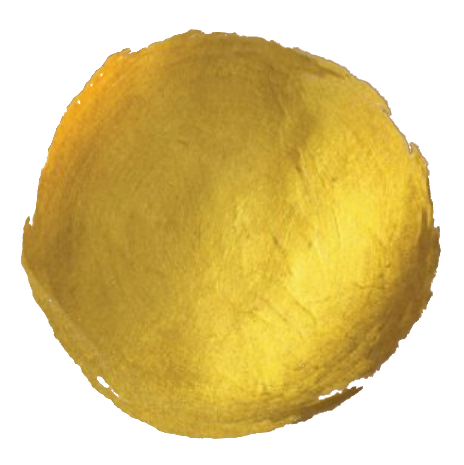You may have heard of sound meditation before, but you might still be wondering exactly how to do it. Sound meditation is a simple and effective way to relax and soothe your mind and body by focusing on sound. It’s a great alternative (or addition) to traditional meditation, especially if you find it hard to concentrate on your breath. Essentially, you just need to listen to a sound, and let it take you into a state of deep relaxation. During a sound bath or a gong bath, if you consciously pay attention to the sounds produced by the sound therapist, then that act is sound meditation.
Meditation can seem daunting, and that’s where sound meditation comes in. By using sound as the focus point, it can help you overcome the difficulty you face in traditional meditation when focusing on your breath.
So how do you do it? Whether you’re an experienced meditator or new to the practice, below I’ve listed some simple steps and tips for using sound to calm your mind and soothe your body.
1. Find a comfortable spot:
First, you’ll want to find a quiet and comfortable spot where you can sit or lie down for some time without being disturbed. If you can’t find such a place in your house, you can try your luck in a nearby park or in nature.
2. Set a time limit:
If you’re new to meditation, you may want to start slowly so that you don’t get discouraged. Start with five or 10 minutes, and you can extend the time as you become more familiar with the process. Trust me, in the future you will get used to this state, you will want to stay in meditation for a longer period.
3. Pick a sound healing instrument to meditate on:
If you have a sound healing instrument such as a Tibetan singing bowl or a gong, then you can just use that to meditate on its sound. Just focus on the sound and the different layers and harmonics without judging or labelling. If you don’t have any instruments, don’t worry. You can easily find plenty of sound healing videos on YouTube with Τibetan healing sounds from Tibetan singing bowls and gongs, crystal singing bowls, chimes and other instruments and meditate on those sounds (check out this list of sound healing instrument). You can even experiment with calming sounds of nature like the sound of light rain, river, waves, etc. Another common sound to meditate on is the OM mantra chanting and other mantras. You will find plenty of sound healing videos to meditate on, on my personal channel (I try uploading new videos every now and then). Once you’ve found your ideal sound, just relax and let the sound do its work.
Tip: Be sure to wear headphones so that you can dive deeper into the experience.
4. Set an intention:
Before you begin your sound meditation, take a moment to set an intention for your practice. This could be anything from an intention “to relax and let go of stress,” “calm my mind,” or “to connect with my inner peace.
5. Get into a comfortable position:
You can either sit in a chair with your feet grounded on the floor, or sit cross-legged, whatever feels comfortable for you. You will want to have your back straight so that you stay alert and be able follow your breath. If siting on a chair or cross-legged is not an option then you could simply lie down. It’s essential to feel comfortable. Just make sure not to fall asleep.
6. Start the sound:
Begin to strike the bowl every 15 seconds. Let the sound dissipates and then strike it again gently. While listening to the sound, focus on every layer and harmonics and allow yourself to tune into the vibrations. Observe patiently. Become one with the sound. Whenever your mind wanders gently bring it back to the sound and the body sensations. If you listen to a recording, then just bring your attention to every sound you hear. That’s the only thing you have to do, listen and observe.
7. Focus on your breath:
While listening to the sound, you can take slow, deep breaths in and out from the nose, and focus on the sensation of your breath. A great visualization that I always use is imagining I inhale white light from the top of my head while I exhale stress, negativity, and toxic thoughts from my feet. Let the sound together with the help of the white light carry the stress and worries out from the feet.
8. Notice when your mind wanders:
Your attention will likely drift away from your breath from time to time, and that’s okay. That’s natural. When you notice that happening, gently bring your attention back to your breath or to the sound without getting discouraged.
9. Be kind to yourself:
The most important tip I could give you is to not be too hard on yourself when your mind wanders. Instead, gently bring your focus back to your breath and try again. Even the most experienced meditators have thoughts coming and going during meditation. That’s the nature of the mind. So, just acknowledge that there are thoughts coming and going and keep returning your attention to the sound.
When you’re done, take a moment to notice your surroundings, your body, and your emotions. Allow yourself to be kind and accepting of whatever you experienced during your meditation.
Some extra, useful tips:
Experiment with different instruments and sounds to find what resonates with you the most.
Try to meditate at the same time and in the same place each day to create a habit.
Be patient with yourself and don’t expect to see immediate results. It takes time and practice to build up your focus and relaxation skills.
If you’re fortunate enough to have a Tibetan singing bowl, why not invite a friend to join you in meditation? Not only will you have a supportive companion to help you stay accountable to your practice, but you’ll also share the benefits of this powerful healing tool. Meditating with others can help deepen your experience and build a stronger connection with the sound and others.






